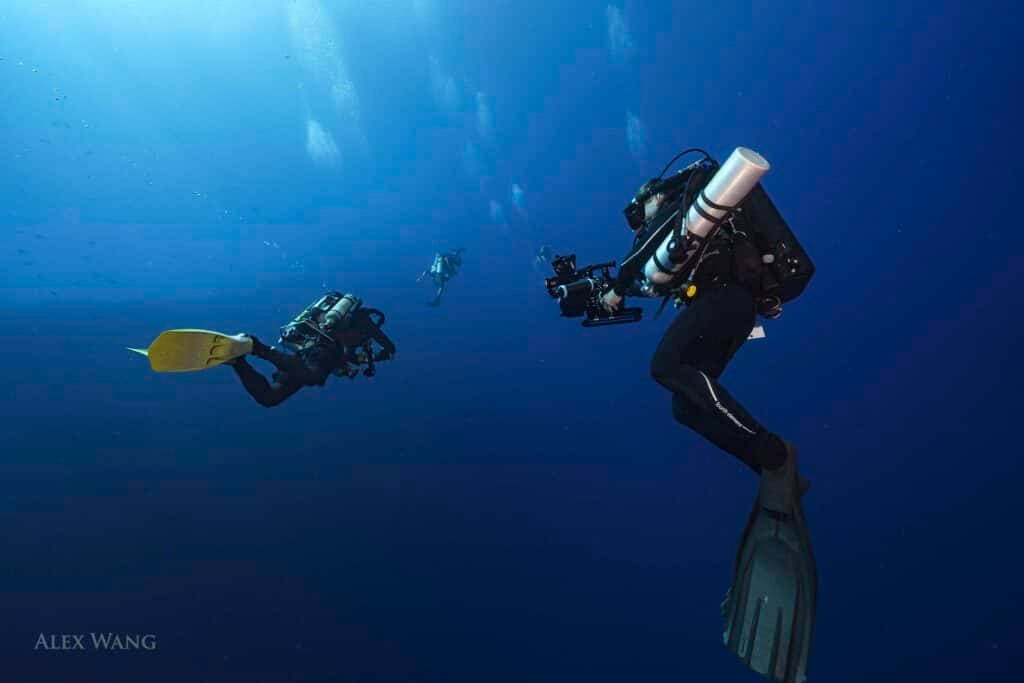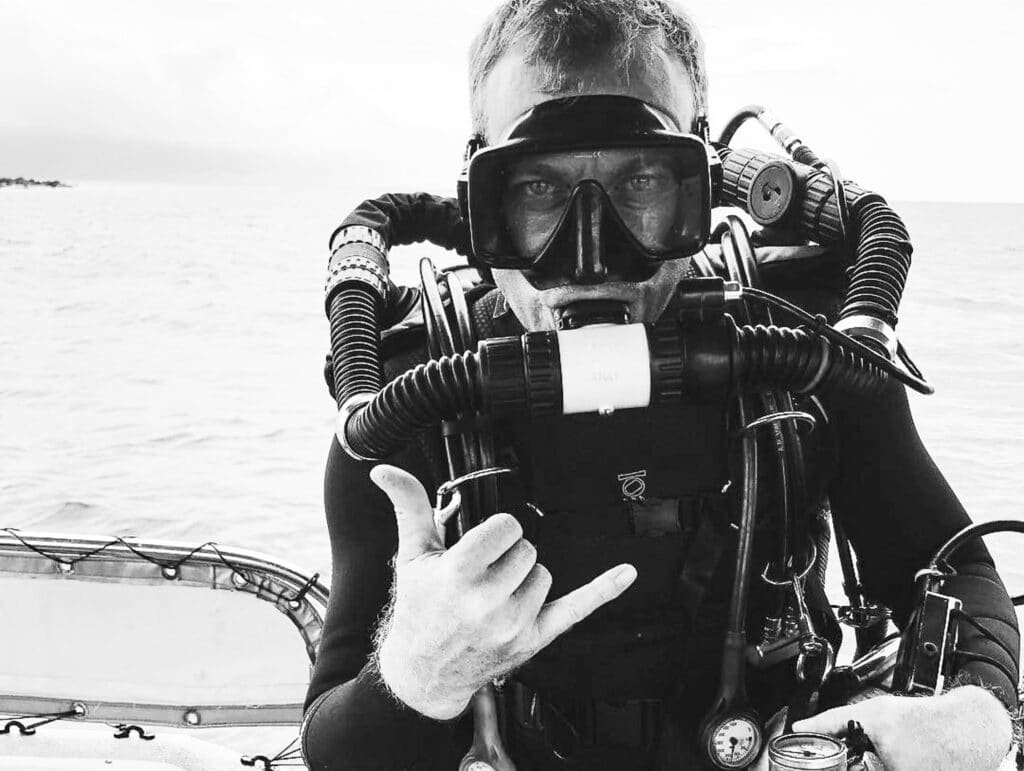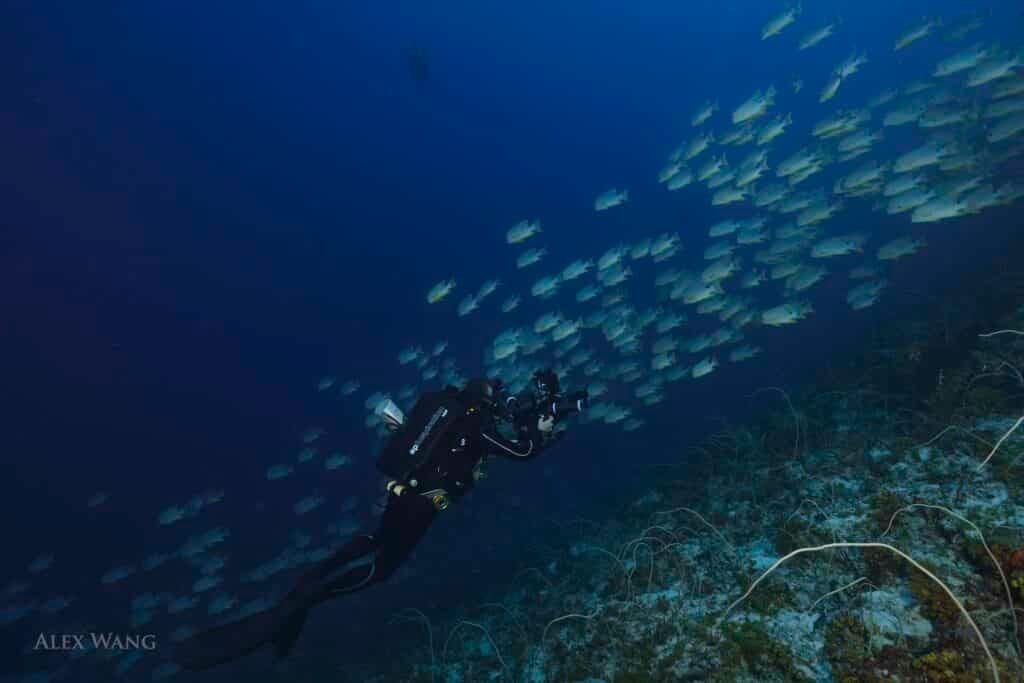Rebreather Underwater Filming.
I have wanted to use a rebreather and film underwater for many years. I saw my first unit, an AP system around the year 2000. Once I realised what it could do for me as an underwater cameraman, I was determined to film using one. The extended decompression times made it immediately attractive. And then of course the lack of bubbles. It’s only after you experience the difference in wildlife behaviour between Open and Closed Circuit do you really see the benefits.
I’ve touched on my experiences during my career as an Underwater Cinematographer here but I’d like to delve a bit deeper into my experiences filming with a Rebreather with this post.
Initial cost
There is a large range of manufacturers these days offering units. Some are more fully integrated and automatic and some are more manual. They all pretty much do the same basic job. Like anything there is a sliding scale in cost, durability and function. Aside from buying the unit you will also need to be trained and this adds to the initial start up cost. 2nd hand units are a great way to reduce this but choose wisely. Get a unit checked and serviced properly before you use it.
Peripherals like bail out tanks, sofnalime, Oxygen and an O2 booster pump add to the already high financial outlay.
The experience
Basically CCR is to SCUBA what SCUBA is to snorkelling. It’s the next level.
Gas supply is no longer the limiting factor but rather the duration of the scrubber which can exceed 5 hours. Your decompression limits are also greatly extended. Then there is the ease of breathing. The gas instead of being cold and dry is already warm and humid because you’ve already exhaled it. You are warmer and less dehydrated during your dive as a result.
Your buoyancy doesn’t change as with SCUBA. This is a good and not so good thing. You will have learnt that breathing in causes you to rise, but not so with CCR. Your gas volume stays the same because you exhale into counter lungs. So you have to relearn your buoyancy control.

It’s a little more bulky than a single SCUBA tank, you carry additional bail out cylinders with you too. This does cut down on your flexibility underwater, but this in turn forces you into a calmer range of movements.
No bubbles
The lack of bubbles has an enormous impact on how animals perceive you. Depending on where you dive. If the underwater residents are used to seeing bubble blowing humans, having one that doesn’t really piques their interest. Manta Rays especially are very curious of a rebreather diver. Fish are not put off and will let you get closer. The lack of noise and the bright bubbles must be very odd for a fish after all. Sharks in particular are interested in what you are and this makes for some incredible interactions.
This short film here was shot whilst using a CCR. Both the fish and Bull Sharks are much more tolerant of me on CCR than with OC.
You can see from the above film how close I was able to get to the fish and sharks. You will have to believe me in this situation, shots like that would have been impossible on Open Circuit.
Safety. The Yellow Box of Death
CCRs require discipline. Preparation takes a lot longer than SCUBA and during use a constant mindfulness of breathing gas and the unit’s status must be maintained. “Cute” nicknames are given to units like “YBD” the Yellow Box of Death. And for good reason. Rebreathers take humans further into an alien world that will kill them. They are designed to take you there and bring you back, but they are not infallible.
A valuable lesson to keep in mind is that CCRs are not 100% reliable. Diving to great depths and accumulating vastly increased dissolved Nitrogen in your tissues is a risky undertaking. It is up to the operator to train, practice and dive safely. Bail out cylinders should always be ready if the unit fails in any way. Switching to backup cylinders and ending the dive safely should always be considered if a situation arises that cannot be resolved in situ.

It’s addictive
After diving for any length of time using SCUBA you get used to it’s limitations. Once you start using a CCR and become comfortable with it, a whole new level of underwater exploration becomes available. If you are prone to exploration and discovery it’s extremely attractive. If you are like me and want to use the technology to document this new frontier it’s the best thing you can do.
My only regret is that I didn’t start sooner.
To find out more about what Underwater cameraman filming services we offer check out this link.



Pingback: Underwater Cameraman- Richard Brooks- filming in the blue ocean
Pingback: Fixer Services for Palau. Professional media production.